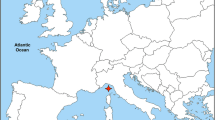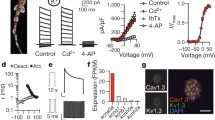Abstract
The ectodermal slow system (SS1)is one of 3 separate nerve nets in sea anemones. SS1 sensory responses coordinate swimming in Stomphia coccinea (escape response) and expansion to dissolved food substances in Urticina felina (pre-feeding response). Here we have studied Actinia equina, Anemonia viridis, and Anthopleura ballii. Although these anemones can escape from nudibranch predators, the SS1 response to attack by Aeolidia papillosa is probably evoked mechanically rather than chemically (cf. Stomphia). Multiple SS1 pulses to mechanical stimulation are described for the first time. Previous work has shown that in the pre-feeding response of Urticina the SS1 is excited by betaine; in Actinia however, the excitant is proline. The anemones studied can utilize the SS1 in 2 different behavioural responses (escape and pre-feeding/feeding) because the different receptors involved respond at different frequencies (at around 0.6 Hz in escape and 0.2 Hz in pre-feeding).
Access this chapter
Tax calculation will be finalised at checkout
Purchases are for personal use only
Preview
Unable to display preview. Download preview PDF.
Similar content being viewed by others
References
Boothby, K. M. & I. D. McFarlane, 1986. Chemoreception in sea anemones: betaine stimulates the pre-feeding response in Urticina eques and U. felina. J. exp. Biol. 125: 385–389.
Edmunds, M., G. W. Potts, R. C. Swinfen, & V. L. Waters, 1976. Defensive behaviour of sea anemones in response to predation by the opisthobranch mollusc Aeolidia papillosa (L.). J. mar. biol. Ass. U.K. 56: 65–83.
Elliott, J., T. Dalby, R. Cohen & D. M. Ross, 1985. Behavioral interactions between the actinian Tealia piscivora (Anthozoa: Actiniaria) and the asteroid Dermasterias imbricata. Can. J. Zool. 63: 1921–1929.
Lawn, I. D., 1976. Swimming in the sea anemone Stomphia coccinea triggered by a slow conduction system. Nature, Lond. 262: 708–709.
Lawn, I. D. & D. M. Ross, 1982. The release of the pedal disk in an undescribed species of Tealia (Anthozoa: Actiniaria). Biol. Bull. 163: 188–196.
McFarlane, I. D., 1969. Co-ordination of pedal-disc detachment in the sea anemone Calliactis parasitica. J. exp. Biol. 51: 387–396.
McFarlane, I. D., 1970. Control of preparatory feeding behaviour in the sea anemone Tealia felina. J. exp. Biol. 53: 211–220.
McFarlane, I. D., 1975. Control of mouth opening and pharynx protrusion during feeding in the sea anemone Calliactis parasitica. J. exp. Biol. 63: 615–626.
McFarlane, I. D., 1976. Two slow conduction systems coordinate shell-climbing behaviour in the sea anemone Calliactis par asitica. J. exp. Biol. 64: 431–445.
McFarlane, I. D., 1982. Calliactis parasitica. In G.A.B. Shelton (ed.) Electrical Conduction and Behaviour in ’Simple’ Invertebrates. Oxford University Press, Oxford: 243–265.
McFarlane, I. D. & I. D. Lawn, 1972. Expansion and contraction of the oral disk in the sea anemone Tealia felina. J. exp. Biol. 57: 633–649.
Robson, E. A., 1961a. Some observations on the swimming behaviour of the anemone Stomphia coccinea. J. exp. Biol. 38: 343–363.
Robson, E. A., 1961b. The swimming response and its pacemaker system in the anemone Stomphia coccinea. J. exp. Biol. 38: 685–694.
Ross, D. M. & L. Sutton, 1964. Inhibition of the swimming response by food and of nematocyst discharge during swimming in the sea anemone Stomphia coccinea. J. exp. Biol. 41: 751–757.
Sund, P. N., 1958. A study of the muscular anatomy and swimming behaviour of the sea anemone Stomphia coccinea. Q. Jl microsc. Sci. 99: 401–420.
Author information
Authors and Affiliations
Editor information
Rights and permissions
Copyright information
© 1991 Springer Science+Business Media Dordrecht
About this paper
Cite this paper
McFarlane, I.D., Lawn, I.D. (1991). The senses of sea anemones: responses of the SS1 nerve net to chemical and mechanical stimuli. In: Williams, R.B., Cornelius, P.F.S., Hughes, R.G., Robson, E.A. (eds) Coelenterate Biology: Recent Research on Cnidaria and Ctenophora. Developments in Hydrobiology, vol 66. Springer, Dordrecht. https://doi.org/10.1007/978-94-011-3240-4_84
Download citation
DOI: https://doi.org/10.1007/978-94-011-3240-4_84
Publisher Name: Springer, Dordrecht
Print ISBN: 978-94-010-5428-7
Online ISBN: 978-94-011-3240-4
eBook Packages: Springer Book Archive




